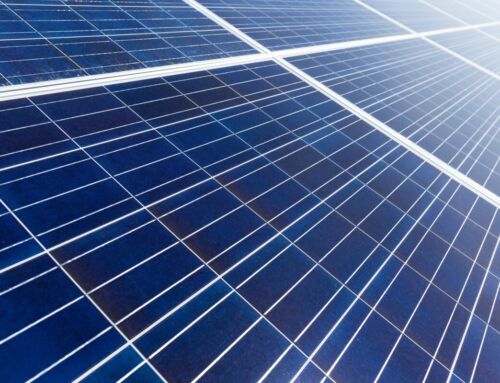Understanding the Basics: What is Energy Transformation in a Solar Panel?
Ever wondered how sunlight becomes electricity? That’s the marvel of Energy Transformation In A Solar Panel. This process allows us to harness solar power for homes and gadgets. Many are puzzled by how this transformation occurs, but let’s demystify it. Solar panels convert sunlight into energy through photovoltaic (PV) cells, primarily made of silicon. These cells absorb sunlight, exciting electrons and generating an electric current, which is the core of energy transformation.
How Solar Panels Work
- Photovoltaic Effect: Converts sunlight into electricity.
- Semiconductor Materials: Silicon is key for absorbing sunlight and freeing electrons.
The Journey from Sunlight to Electricity
The generated electric current travels through the panel’s wiring to an inverter, which converts direct current (DC) into alternating current (AC) for home and business use. This conversion is crucial for efficient energy transformation in a solar panel.
- Inverter Role: Converts DC to AC.
- Efficiency: Modern inverters minimize energy loss.
Understanding these basics reveals the incredible journey of energy transformation in a solar panel, turning sunlight into a sustainable power source.
How Do Solar Panels Convert Sunlight into Usable Energy?
Attention: Curious about how solar panels can power your home? Problem: The energy transformation in a solar panel might seem complex, but it’s essential for tapping into renewable energy. Promise: Let’s simplify how sunlight turns into usable electricity. Solar panels, composed of photovoltaic (PV) cells, are central to this process. When sunlight strikes these cells, it excites electrons, generating an electric current through the photovoltaic effect, the initial step in solar energy conversion.
The Photovoltaic Effect
- Light Absorption: PV cells capture photons from sunlight.
- Electron Excitation: Energized electrons begin to move.
- Electric Current Generation: This movement creates direct current (DC).
To power household appliances, this DC must be converted into alternating current (AC). Inverters perform this conversion, transforming DC into AC, thus making the energy usable for daily needs. This efficient energy transformation in a solar panel underscores why solar power is a sustainable and practical energy solution.
The Science Behind Photovoltaic Cells: A Deep Dive
Harnessing solar power is now a reality, transforming how we generate sustainable energy. This transformation, crucial for a greener future, occurs through photovoltaic cells in solar panels. These cells, primarily made of silicon, convert sunlight into electricity via the photovoltaic effect, a key process in energy transformation in a solar panel.
How Photovoltaic Cells Work
- Absorption of Sunlight: Semiconductor materials absorb photons.
- Electron Excitation: Photons excite electrons, freeing them from atomic bonds.
- Electric Current Generation: Freed electrons flow, creating an electric current.
Benefits of Photovoltaic Energy Transformation
- Renewable Energy Source: Solar panels offer sustainable electricity generation.
- Reduction in Carbon Footprint: Solar energy decreases reliance on fossil fuels, cutting greenhouse gas emissions.
- Energy Independence: Solar panels provide energy security and reduce grid dependency.
Understanding this energy transformation highlights modern technology’s marvels and its potential for a sustainable future. As innovation continues, photovoltaic cells will be pivotal in responsibly powering our world.
Exploring the Efficiency of Energy Transformation in Solar Panels
Have you ever wondered how sunlight transforms into electricity? This fascinating process, known as Energy Transformation In A Solar Panel, is pivotal in harnessing renewable energy. However, the challenge lies in maximizing efficiency to meet our growing energy demands. Fortunately, advancements in technology promise significant improvements in this area. Understanding the Basics of Energy Transformation At its core, energy transformation in a solar panel involves converting sunlight into usable electricity through photovoltaic cells. These cells are made of semiconductor materials, typically silicon, which absorb photons and release electrons, creating an electric current. This process is both complex and efficient, but there’s always room for improvement. Factors Influencing Solar Panel Efficiency
- Material Quality: High-quality materials enhance energy conversion rates.
- Panel Design: Innovative designs can capture more sunlight.
- Environmental Conditions: Temperature and sunlight intensity affect performance.
By focusing on these factors, manufacturers can optimize the energy transformation process, making solar panels more efficient and cost-effective. As technology evolves, so does our ability to harness the sun’s power more effectively, paving the way for a sustainable future. 
Thinking about solar energy? See how it can lower your bills and elevate your home’s efficiency. Get Your Free Estimate at NewSolar Quotes
Factors Influencing Energy Transformation Efficiency in Solar Panels
Solar panels are a promising solution for sustainable energy, but their efficiency in transforming sunlight into usable power is crucial. Understanding the factors that influence this transformation is key to optimizing performance. Material Composition The efficiency of solar panels largely depends on their material. Silicon is the most common, available in monocrystalline, polycrystalline, and thin-film forms, each with varying efficiency levels. Monocrystalline panels are particularly efficient due to their uniform structure. Environmental Conditions External factors such as temperature, shading, and dirt can impact energy transformation. Solar panels perform best in cooler temperatures, and even slight shading can significantly reduce efficiency. Regular cleaning helps maintain optimal performance by removing dirt and debris. Technological Innovations Technological advancements continue to improve solar panel efficiency. Innovations like bifacial panels, which capture sunlight from both sides, and the use of perovskite materials, enhance energy transformation. These technologies promise increased output without substantial cost increases, making solar energy more viable.
Innovations in Solar Technology: Enhancing Energy Transformation
Solar technology is revolutionizing how we harness the sun’s power, with innovations enhancing the Energy Transformation In A Solar Panel. Perovskite Solar Cells are leading this change, offering higher efficiency and lower costs than traditional silicon cells. Their flexibility and lightweight nature allow integration into various surfaces, transforming energy capture. Another breakthrough is Quantum Dot Technology, which uses tiny semiconductor particles to improve light absorption and conversion efficiency. This advancement enables solar panels to capture a broader spectrum of sunlight, increasing energy transformation from the same sunlight amount. Additionally, Bifacial Solar Panels are becoming more popular. These panels capture sunlight from both sides, boosting energy output, especially in reflective environments like snow or sand. This innovation maximizes energy transformation, making solar power more viable across diverse settings. Overall, these advancements promise a brighter future for solar energy, making it a more integral part of our energy landscape and driving us towards sustainability.
Environmental Impact: How Solar Panels Transform Energy Sustainably
Imagine a world where energy is harnessed directly from the sun, reducing our reliance on fossil fuels. Traditional energy sources significantly contribute to environmental degradation, but solar panels offer a sustainable solution by transforming sunlight into clean energy. This transformation occurs when solar cells absorb photons, exciting electrons to create an electric current, which powers homes and businesses, reducing carbon emissions.
How Solar Panels Work
- Photovoltaic Cells: Capture sunlight and initiate the energy transformation process.
- Inverters: Convert direct current (DC) from solar cells into alternating current (AC) for household use.
Benefits of Solar Energy Transformation
- Reduces Carbon Footprint: Solar panels decrease greenhouse gas emissions by relying on the sun.
- Sustainable Energy Source: Solar energy is abundant and renewable, providing a long-term energy solution.
Transitioning to solar energy supports environmental sustainability and promotes energy independence. Understanding the Energy Transformation In A Solar Panel highlights its crucial role in fostering a cleaner, greener future.
Real-World Applications: Harnessing Energy Transformation in Solar Panels
Curious about how sunlight becomes electricity? This process, known as Energy Transformation In A Solar Panel, is changing the way we power our lives. With traditional energy sources dwindling and damaging our environment, solar panels offer a promising, sustainable alternative by converting sunlight into usable energy efficiently. Solar panels are crucial in the global transition to renewable energy. Central to this is the photovoltaic effect, where solar cells transform sunlight into electricity through a few key steps:
- Absorption of Sunlight: Photovoltaic cells capture sunlight.
- Conversion to Electricity: The light excites electrons, generating an electric current.
- Distribution: This current is converted into usable electricity for homes and businesses.
The advantages of utilizing energy transformation in solar panels are significant. They not only cut electricity costs but also reduce carbon emissions, promoting a cleaner environment. As technology progresses, solar panels are becoming more efficient, solidifying their role as a viable solution for energy transformation globally.
How NewSolarQuotes Can Help You Maximize Energy Transformation in Solar Panels
Are you aiming to fully utilize solar energy? Many users face challenges in optimizing energy transformation, leading to inefficiencies. At NewSolarQuotes, we provide solutions to enhance energy transformation in solar panels, ensuring you maximize your investment.
Understanding Energy Transformation in a Solar Panel
Energy transformation involves converting sunlight into electricity, crucial for solar system efficiency. Understanding this process helps you make informed energy decisions.
- Photovoltaic Cells: Convert sunlight into electrical energy.
- Inverters: Change direct current (DC) to alternating current (AC) for home use.
How NewSolarQuotes Enhances Energy Transformation
NewSolarQuotes offers advanced technology and expert guidance to optimize your solar panel’s energy transformation:
- Customized Solutions: Tailored advice for your energy needs.
- Advanced Monitoring Systems: Enhance solar panel performance.
- Expert Consultation: Access industry experts for efficiency maximization.
Choosing NewSolarQuotes ensures your solar panels perform optimally, saving money and reducing your carbon footprint.
FAQ
1. What kind of energy transformation happens in a solar panel?
Solar panels convert solar energy (light energy) into electrical energy using photovoltaic cells.
2. What is the initial form of energy in this process?
The initial form is radiant energy (sunlight).
3. What is the final form of energy we use from solar panels?
The final output is electric energy (DC electricity), which can be used directly or converted to AC for home use.
4. What role do photovoltaic cells play?
Photovoltaic cells absorb sunlight and transform it into electrical energy through the photovoltaic effect.
5. Is any energy lost during the transformation?
Yes, some energy is lost as heat, and panel efficiency varies, typically converting 15% to 22% of sunlight into usable electricity.
Switch to solar and start saving now! Don’t miss out on a cleaner, cost-effective energy solution. Schedule Your Free Consultation at NewSolar Quotes
Discover more ways to save with solar! Visit New Solar Quote and see the potential for your home.





